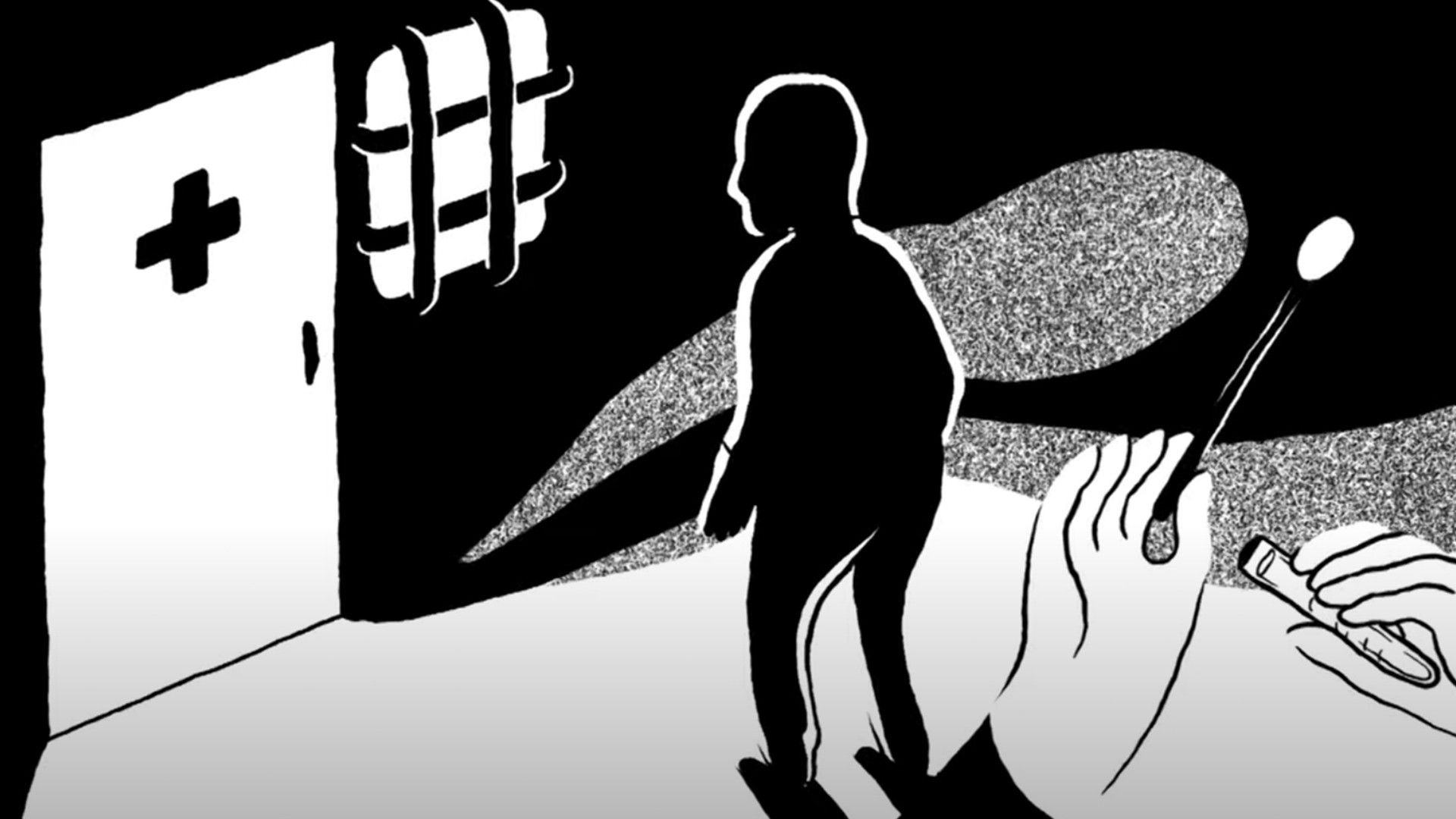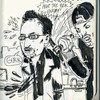Famed Brooklyn restaurant Junior's sits empty in mid March. Photo by ANGELA WEISS/AFP via Getty
Michael Shemtov is in a bind. The Charleston-based restaurateur owns ten establishments across South Carolina and Tennessee, and is working on reopening eight of them as both of those states relax pandemic restrictions. In South Carolina, restaurants with outdoor dining can reopen as of this week; in Tennessee all restaurants will be able to operate at half capacity starting Monday. But reopening isn't so simple.Unlike some unlucky small business owners, Shemtov was able to get all the Payroll Protection Program (PPP) loans he applied for, which range from $40,000 to over $300,000 and which he won't have to repay if he uses 75 percent of the money to rehire staff and the rest on rent or utility payments. The problem for Shemtov and other restaurant owners is that PPP loans can't be used to pay for a slew of bills they need to pay in order to reopen, and the money must be used eight weeks after the loan is approved. That's left owners wondering not only whether it's financially wise to reopen, but whether by doing so they're putting their employees and guests at risk. There's an immense amount of uncertainty, and PPP doesn't resolve any of it."I have this financial motivation, because of the way this program is structured, to get back open as soon as possible and get as many guests and staff in the building as possible," Shemtov said. "And yet I have a much larger public safety concern and concern for my staff."When Friday's unemployment report dropped, it revealed just how suddenly and sharply the bottom has fallen out of the U.S. job market. Unemployment has risen to 14.7 percent from 4.4 percent in March, and 20.5 million jobs were lost in April. The bulk of those losses came from the leisure and hospitality industry, which bled 7.7 million jobs, 5.5 million of which were in food services or bars.In states where restaurants can open, owners are anticipating a steep drop in demand. Establishments operating at 50 percent capacity will be making much less than 50 percent of what they usually make, Shemtov pointed out, since they'll have the same number of kitchen staff working and have to pay for things like food and insurance, which PPP funds can't be used for. "One of my restaurants needs to renew our alcohol license, which we normally would have renewed in March or April," said Shemtov. In Charleston, that renewal costs between $6,000 and $10,000—but to get the license Shemtov also has to pay back sales taxes that he wasn't able to cover thanks to the pandemic. "I need $30,000 just to pour the first glass of wine," he said. Delivery and takeout might be able to keep some restaurants afloat, but it's not a viable option for many, nor is it what a lot of restauranteurs want to do. "So much of us are in it because we like seeing people eat our food and smile and we like the community," said Shemtov. "And here we're saying like, 'Pull up and pop your trunk open. Please don't roll down the window and say hi to me.'"On top of that is another problem, Pugsley pointed out, which is that the pandemic has created some supply chain issues. "I don't see many places surviving," he said. "You might not be able to get customers in the door and you might not be able to get the product that you had before the coronavirus situation."The IRC is asking Congress to allocate $120 billion in grants and loans to independent non-chain restaurants, especially those owned by women or people of color, a fund that could be used to pay for all operating costs, not just the categories that PPP money can be used for. Even then, Pugsley thinks, there might be tensions about what kind of establishment ends up getting the money. "if I have a small 25-seat pub, and you have a 350-seat two-floor restaurant, and we're on the same block in the same neighborhood and we're both community favorites, how do we ensure that you get your share and I get my share, and we're both happy?"But the current situation is undoubtedly worse, with restaurants unsure when they can open, or when they'll have sustainable businesses, and with PPP loans having an expiration date that makes them worthless for some restaurants. "We're looking at a cliff in eight weeks where we likely have to lay everybody back off," Shemtov said. "It's really just staring at bad options right now."Follow Harry Cheadle on Twitter.
Delivery and takeout might be able to keep some restaurants afloat, but it's not a viable option for many, nor is it what a lot of restauranteurs want to do. "So much of us are in it because we like seeing people eat our food and smile and we like the community," said Shemtov. "And here we're saying like, 'Pull up and pop your trunk open. Please don't roll down the window and say hi to me.'"On top of that is another problem, Pugsley pointed out, which is that the pandemic has created some supply chain issues. "I don't see many places surviving," he said. "You might not be able to get customers in the door and you might not be able to get the product that you had before the coronavirus situation."The IRC is asking Congress to allocate $120 billion in grants and loans to independent non-chain restaurants, especially those owned by women or people of color, a fund that could be used to pay for all operating costs, not just the categories that PPP money can be used for. Even then, Pugsley thinks, there might be tensions about what kind of establishment ends up getting the money. "if I have a small 25-seat pub, and you have a 350-seat two-floor restaurant, and we're on the same block in the same neighborhood and we're both community favorites, how do we ensure that you get your share and I get my share, and we're both happy?"But the current situation is undoubtedly worse, with restaurants unsure when they can open, or when they'll have sustainable businesses, and with PPP loans having an expiration date that makes them worthless for some restaurants. "We're looking at a cliff in eight weeks where we likely have to lay everybody back off," Shemtov said. "It's really just staring at bad options right now."Follow Harry Cheadle on Twitter.
Advertisement
Advertisement
These numbers just confirm what was already obvious: The restaurant industry has been devastated by the pandemic. It's also facing a particularly tough path to recovery. It could be weeks before some states allow restaurants to start doing dine-in service again, and even in places where restrictions have been loosened, it's unclear how long it will be before people will feel safe going out to eat. According to the Independent Restaurant Coalition (IRC), a newly-formed lobbying group of which Shemtov is a member, sales have dropped $80 billion over the last two months, and restaurants can expect only a 30 percent chance of staying open if this pandemic lasts another four months.Eddie Pugsley is the recently laid-off director of Hudson Hospitality Group, which operates seven restaurants in New York's Hudson Valley region. The company laid off all of its 100 workers, helped them apply for unemployment, and turned its largest restaurant, the Factoria in Peekskill, into a place where laid-off hospitality workers could come to get free food. The Factoria has an immense patio, Pugsley said, enough space that diners could safely social distance while eating their meals. "But number one, it's not allowed," Pugsley said, "and in my opinion people are still not comfortable enough to do that yet."Pugsley and Shemtov both said they knew of restaurant owners who had used PPP money to rehire their staff and pay the rent without actually reopening, meaning the funds were used to just keep these places in a holding pattern. One owner, Shemtov said, decided not to apply for a PPP loan because it wouldn't offer him enough relief. Other places have simply had to shut down permanently, including independent restaurants that were always a labor of love but also larger companies, like the 97-location chain Souplantation. In some cases, the coronavirus has finished off beloved but struggling local institutions like New York City's Gem Spa. Every closed restaurant means that temporary job losses have been made permanent.
Advertisement

